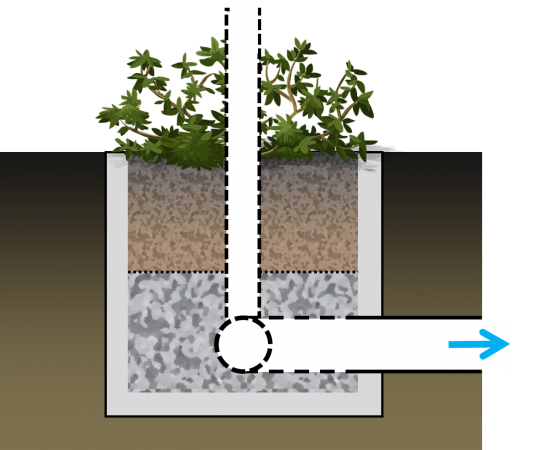Difference between revisions of "Biofilters"
Jump to navigation
Jump to search
Jenny Hill (talk | contribs) |
Jenny Hill (talk | contribs) |
||
| Line 5: | Line 5: | ||
===Performance=== | ===Performance=== | ||
---- | ---- | ||
| − | === | + | ===Materials=== |
<ol> | <ol> | ||
<li>Non-infiltrating bioretention planters are often fitted into tight spaces within highly urbanized contexts. In these cases the cell may be constructed of concrete. This can be further waterproofed/have added resiliency from the application of a liquid sealant. Alternatively, a [[liner]] may be used.</li> | <li>Non-infiltrating bioretention planters are often fitted into tight spaces within highly urbanized contexts. In these cases the cell may be constructed of concrete. This can be further waterproofed/have added resiliency from the application of a liquid sealant. Alternatively, a [[liner]] may be used.</li> | ||
Revision as of 12:25, 13 July 2017
Overview[edit]
Over subsurface infrastructure, soils prone to subsidence, or pollution hotspots, it may be necessary to prevent all infiltration. These BMPs can also be squeezed into tight urban spaces, adjacent to buildings and within the usual setbacks required for infiltrating facilities.
Performance[edit]
Materials[edit]
- Non-infiltrating bioretention planters are often fitted into tight spaces within highly urbanized contexts. In these cases the cell may be constructed of concrete. This can be further waterproofed/have added resiliency from the application of a liquid sealant. Alternatively, a liner may be used.
- Underdrain
- Biomedia
- Erosion control
- Mulch
- Planting considerations and Recommended species
